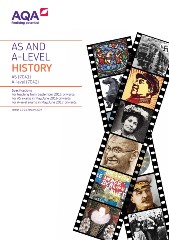1A The Age of the Crusades, c1071–1204
This option allows students to study in breadth issues of change, continuity, cause and consequence in this period through the following key questions:
- What were the motives of the crusaders and the counter-crusaders?
- What problems faced the states in Outremer and how successfully were these problems addressed?
- How important were faith and ideas for Christians and Muslims?
- What was the impact of the crusades on the Muslim Near East?
- How did the Byzantine Empire, Outremer and the Latin West change and what influenced relations between them?
- How important was the role of key individuals and groups and how were they affected by developments?
Part one: the Crusader states and Outremer, c1071–1149
The origins of conflict and the First Crusade, c1071–c1099
- Christianity in western Europe c1071; the role of the Church in the late 11th century; the rising influence of the Papacy
- Islam c1071: Muslim expansion and the rise of the Seljuk Turks
- The Byzantine Empire c1071: the internal problems of the Byzantine Empire; the impact of defeat in the Battle of Manzikert
- Urban II: the reasons for the calling of the First Crusade; responding to the call for help from the Byzantine Empire; the political and religious motives of the Papacy
- The motives of the crusaders; Raymond of Toulouse and the Frankish knights; popular movements
- The course and impact of the First Crusade and its impact on the Muslim Near East, the Byzantine Empire and the Latin West by 1099
The foundation of new states and the Second Crusade, c1099–1149
- Establishing the states of Outremer: Kings Baldwin I, II and Queen Melisende; expansion and conquest; trade and pilgrimage
- The foundation of the military orders: Templars and Hospitallers; their military, religious and economic roles
- Relations of the Crusader states with the Byzantine Empire, the Latin West, the Muslim Near East and indigenous peoples
- The Islamic response to the Crusader states: Islamic politics and the rise of ideas of jihad under Zengi
- The preaching of the Second Crusade; its course and outcome
- The impact of the Second Crusade on the Muslim Near East, the Byzantine Empire, the Latin West and Outremer by 1149
Part two: the revival of Islam and the later Crusades, 1149–1204 (A-level only)
The Muslim Counter-Crusade and Crusader states, 1149–1187 (A-level only)
- The context of Islamic power in the Near East from 1149; the rise of Nureddin in Syria and Egypt and the growth of jihad
- Outremer from 1149: political developments, military strengths and weaknesses
- Relations between Outremer and wider Christendom, the Latin West and the Byzantine Empire
- Internal divisions within Outremer, including the reign of Baldwin IV and his successors
- The rise of Saladin: religion, politics and military expansion; victory at Hattin
- The crisis of Outremer: the consequences of Saladin’s capture of Jerusalem
The Third and Fourth Crusades, 1187–1204 (A-level only)
- Preaching and preparing for the Third Crusade: motives of Pope Gregory VIII; Henry II and Richard I of England; Philip II of France; Frederick Barbarossa
- The course of the Third Crusade: leadership and internal rivalries of the Crusaders; the reasons for the military outcome
- The impact of the Third Crusade; Saladin’s power and prestige in the Muslim Near East
- The origins of the Fourth Crusade; the papacy of Innocent III; the weakness of the Byzantine Empire; the role of Venice
- The course of the Fourth Crusade: military preparations; the diversion to Zara; the failure to make any impact on Muslim power
- The legacy of the Crusades by 1204: the Muslim Near East, the Byzantine Empire and the Latin West
